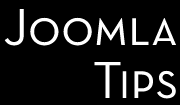A Cross Site Request Forgery (CSRF) attack relies on the trust a website has for a user to execute unauthorized requests and or transactions. For example, say a user is logged into their Joomla! websites' administrator interface in one tab and is browsing a compromised site in another tab.
Dictionary
You might heard lot of weird expressions and acronyms when is coming about hacking. What XSS, LFI and all these things are meaning? You can find'em here!
This attack consists of changing resource identifiers used by an application in order to perform a malicious task. When an application permits a user input to define a resource, like a file name or port number, this data can be manipulated to execute or access different resources.
Full Path Disclosure (FPD) vulnerabilities enable the attacker to see the path to the webroot/file. e.g.: /home/omg/htdocs/file/. Certain vulnerabilities, such as using the load_file() (within a SQL Injection ) query to view the page source, require the attacker to have the full path to the file they wish to view. Then the attacker can use this info to perform other type of attacks based on the obtained information.
Vandals often use hacking techniques to deface a website or destroy data and files, but there are also those who just want to steal resources (make use of other peoples' servers without their knowledge or permission) or to cover their tracks by stealthily making use of hardware owned by legitimate businesses to carry out processing for illegal operations or to relay spam and viruses to others.
One popular and potentially devastating method of attack against Joomla powered sites is SQL injection. Any web application that makes use of a database usually communicates with the database for necessary functions using a special language known as 'Structured Query Language', or SQL. Joomla, by the way, uses an open source implementation of this language, MySQL.
Cross Site Scripting is a hacking technique whereby malicious scripting code (usually javascript) is injected into user input forms (in a similar way to SQL injection attacks) or incorporated in a URL query string.
